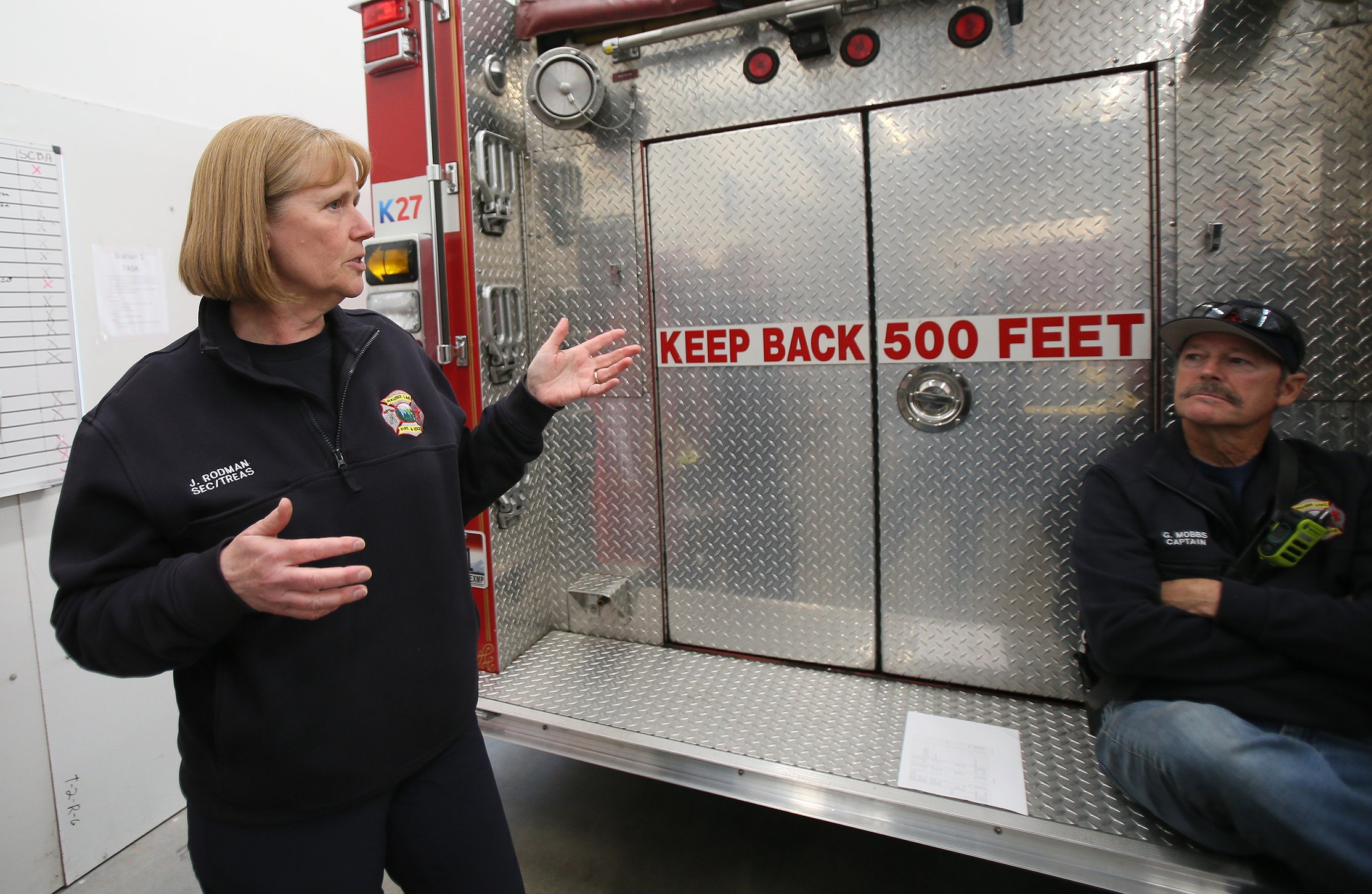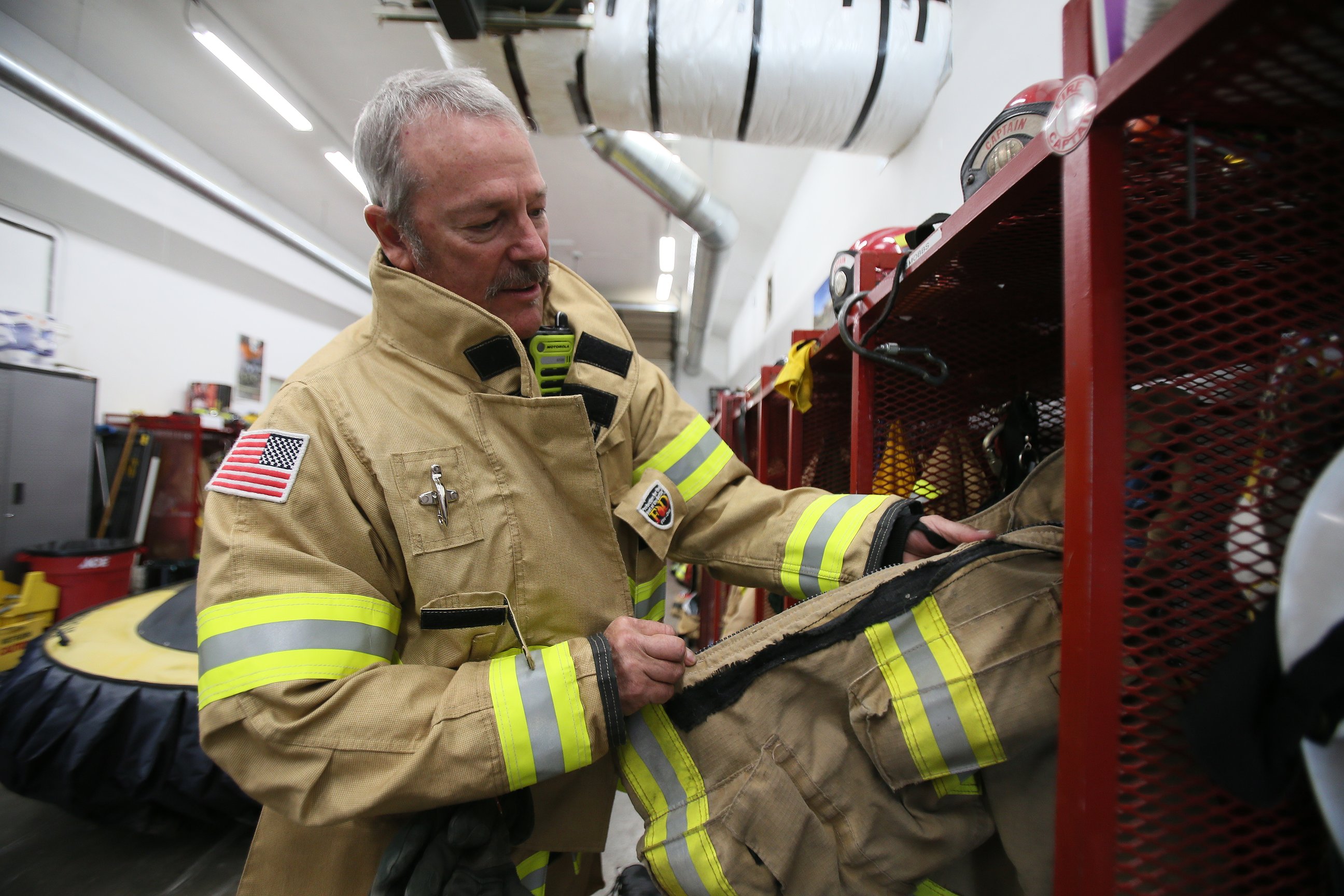Hauser Fire to float levy for first time in 21 years
HAUSER — The Hauser Lake Fire Protection District and Volunteer Fire Department will float a $480,675 maintenance and operations levy reset in May.
If approved by the required 66.67% supermajority of voters, the levy would raise Hauser Fire’s annual base budget from $255,392 to $736,067, after which the state’s 3% cap per year would apply as normal going forward. The yearly $.51 per $1,000 property owners in the district are now paying would go up to $1.48 per $1,000, for a fee increase of $.97 per $1,000 of taxable assessed property value beginning Oct. 1, if the supermajority is reached.
This is the first time since 2003 the department will put forth a levy measure to its constituents, and only the second time since Hauser Fire’s inception in 1952. The department was officially established as a fire protection district in 1976.
Hauser Fire currently responds to 90% of emergency calls within 10 minutes, according to a comprehensive survey completed in 2021. Its crews went on 183 runs in 2023 and are expected to go on over 200 runs this year.
The district, which serves more than 2,000 people in the Hauser Lake area, is projected to grow by 60% by 2031.
“People think that since we’ve had all these new people come to the district, our income must be increasing too. It’s not,” Hauser Fire treasurer and administrative assistant Joan Rodman said Tuesday.
A Community Conversation and Cookies open house will be from 6 to 7:30 tonight at the Hauser Fire station, 10728 N. Hauser Lake Road, for community members to engage with fire officials and ask questions about the upcoming levy election.
Residents will be asked to vote on this levy May 21 as the department’s budget has fallen behind the present costs of equipment and technology.
Levy funds would be used to: Maintain and enhance firefighting and emergency medical services as demand grows; replace aged apparatus and equipment, such as radios and personal protective equipment; increase paid personnel; provide funds necessary to capture impact fees made available to Hauser Fire before those funds must be returned; and to preserve Hauser Fire’s favorable Idaho Survey and Rating Bureau insurance rating.
Community members supported a levy increase when Hauser Fire last asked them to go to the polls in 2003.
“We’ve been really good stewards of the resources,” Rodman said. “We now have 43 volunteers who put time, energy and talents into this department, and that goes back into our district. Our volunteers have helped us save our money and stretch our dollars. We also resisted going to the taxpayers. We don’t want to ask this of taxpayers if we don’t have to.”
She said had the department gone for a levy reset 10 years ago, the ask would have been smaller.
“Because it’s been 21 years, we need a big one,” she said.
Although Hauser Fire only has one and-a-half paid staff members, it still costs money to equip and outfit volunteers. Chief James Neils, who has lived in the district for over 40 years, said it costs more than $23,000 to outfit each volunteer firefighter and emergency medical technician. By itself, a radio — an integral part of firefighting communication — costs over $8,000.
“It’s more than just fire,” Capt. Gary Mobbs said. “It’s EMS, ice rescue, water rescue, technical rescue, wildland. We do our own EMS training in house, so that saves the taxpayers.”
An EMS course at North Idaho College costs $2,795 per person.
“We have six in the class,” Neils said. “That’s $16,000 we’re saving.”
Mobbs is celebrating 46 years with Hauser Fire this month. He was 18 when he started as a volunteer firefighter.
“I love it,” he said. “I really do. I love fighting fire.”
Mobbs was part of Hauser Fire’s first official interior training, conducted with the old Post Falls Fire Department around 1979.
“I’d like to get into firefighting teaching. I’m starting to like that more and more,” he said. “Like the ice rescue, that’s our puppy, it really is. Through the whole state. I’ve literally taught from the Canadian border down by Boise.”
Rodman said in the few instances of levy opposition the department has so far heard, it has been questioned, “Why does Hauser even need a fire department?”
“The irony of that is if we didn’t have a fire department now, we would be going back to the 1950s,” Rodman said.
Hauser Fire’s first volunteer fire department formed after a house burned down on the north side of Hauser Lake. In the aftermath, community members banded together to ensure they could save structures, not just foundations.
“And they were scrappy,” Rodman said. “There’s nothing wrong with scrappy. We still hold those values. We are still a resourceful, frugal department.”
Although Hauser Fire’s tax dollars are only collected within the fire protection district, the volunteer firefighters support other agencies when duty calls. Through a mutual aid agreement, Hauser Fire will assist where needed, from Spokane to the Fourth of July Pass, from Priest River to the southern end of Coeur d’Alene.
“In a big event, there’s not a fire department that has enough,” Neils said. “We all have to help each other.”
If Hauser Fire’s levy does not receive the votes required to pass, Hauser Fire will continue operations but response will fall behind without necessary resources. Its impact fees, which it has only collected since 2022, will need to be returned. Revenue-generating and money-saving opportunities will be missed without additional paid staff who would help with grant writing and other tasks. New requirements for insurance ratings may not be met, which would increase homeowners’ insurance premiums.
Rodman said she has been heartened by the support the department is already seeing from its community.
“They recognize the value, they realize what an exceptional resource this is,” she said. “It’s the hub of Hauser.”
Info: hauserfire.org
 Hauser Lake Fire Protection District Chief James Neils discusses the importance of radios for firefighting Tuesday at the fire station in Hauser. The volunteer department will be asking residents in its district to go to the polls in May for a levy reset that, if approved, would help fund operations and keep Hauser Fire's budget on pace with rising costs.
Hauser Lake Fire Protection District Chief James Neils discusses the importance of radios for firefighting Tuesday at the fire station in Hauser. The volunteer department will be asking residents in its district to go to the polls in May for a levy reset that, if approved, would help fund operations and keep Hauser Fire's budget on pace with rising costs. Joan Rodman, Hauser Fire treasurer and administrative assistant, provides details Tuesday about why the volunteer fire department will be floating a $480,675 levy in May. An open house will be from 6-7:30 tonight at the Hauser Fire Station, 10728 N. Hauser Lake Road, for community members to engage with fire officials and ask questions about the upcoming levy election. Also pictured: Hauser Fire Capt. Gary Mobbs.
Joan Rodman, Hauser Fire treasurer and administrative assistant, provides details Tuesday about why the volunteer fire department will be floating a $480,675 levy in May. An open house will be from 6-7:30 tonight at the Hauser Fire Station, 10728 N. Hauser Lake Road, for community members to engage with fire officials and ask questions about the upcoming levy election. Also pictured: Hauser Fire Capt. Gary Mobbs.




